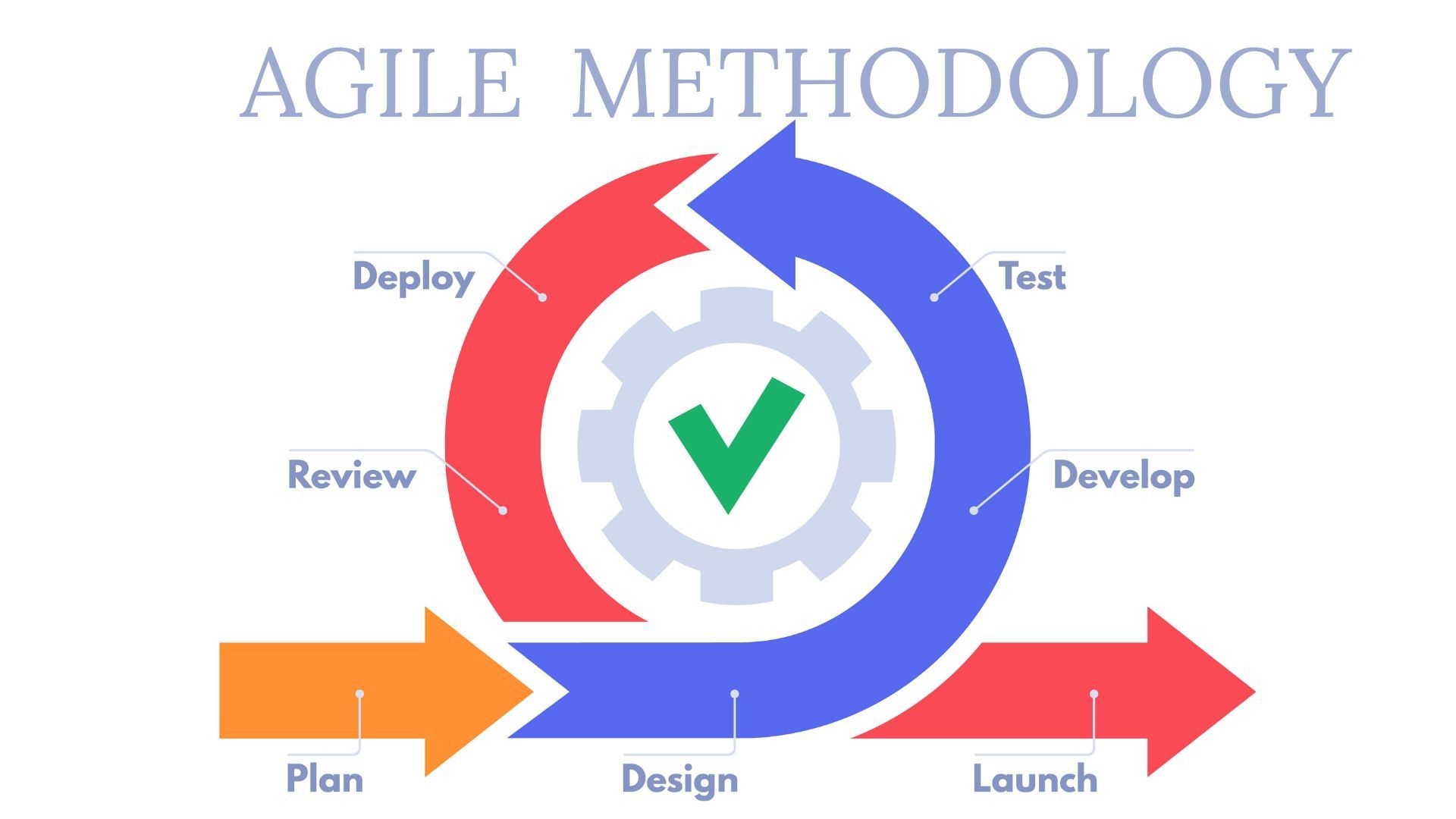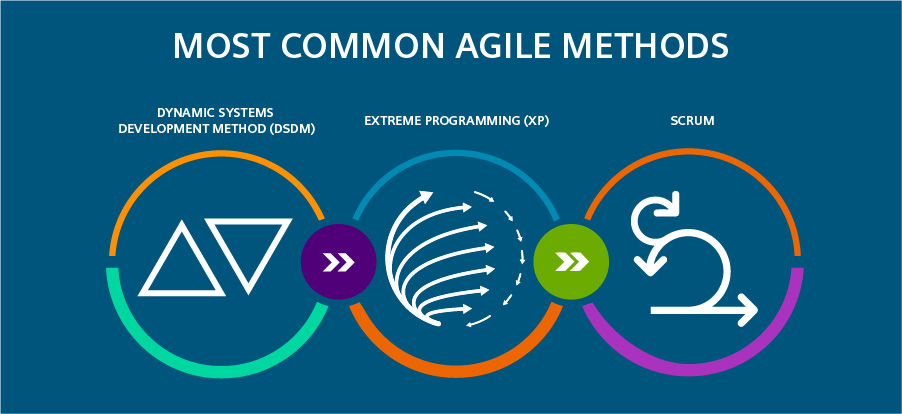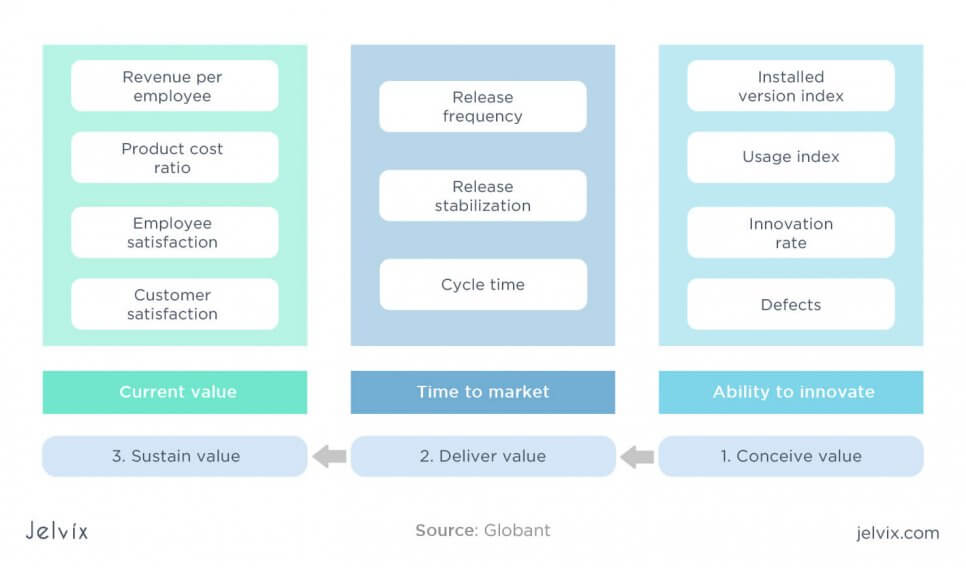What is Agile Development and Why is it Important?
Agile development methodologies have revolutionized the way software is developed, enabling teams to respond quickly to changing requirements and deliver high-quality products faster. At its core, agile development is an iterative and incremental approach to software development that emphasizes flexibility, collaboration, and customer satisfaction. The Agile Manifesto, created in 2001 by a group of software developers, outlines the core values and principles of agile development, including individuals and interactions, working software, customer collaboration, and responding to change.
Agile development methodologies have become increasingly popular in recent years due to their ability to improve team productivity, reduce project risk, and increase customer satisfaction. By breaking down work into smaller, manageable chunks, and focusing on continuous improvement and delivery, agile teams can respond quickly to changing requirements and deliver high-quality products faster. Additionally, agile development encourages collaboration and communication among team members, stakeholders, and customers, ensuring that everyone is aligned and working towards the same goals.
One of the key benefits of agile development is its ability to reduce project risk. By breaking down work into smaller, manageable chunks, and focusing on continuous delivery, agile teams can identify and address potential issues early on, reducing the risk of project failure. Additionally, agile development enables teams to respond quickly to changing requirements, reducing the risk of project scope creep and ensuring that the final product meets the customer’s needs.
Agile development methodologies also improve team productivity by encouraging collaboration and communication among team members. By working together to achieve common goals, team members can share knowledge, expertise, and ideas, leading to better solutions and improved productivity. Additionally, agile development encourages continuous improvement, enabling teams to reflect on their processes and identify areas for improvement, leading to increased efficiency and productivity.
In summary, agile development methodologies are a powerful approach to software development that emphasizes flexibility, collaboration, and customer satisfaction. By breaking down work into smaller, manageable chunks, and focusing on continuous improvement and delivery, agile teams can respond quickly to changing requirements, reduce project risk, and improve team productivity. As the software development landscape continues to evolve, agile development methodologies will remain a crucial component of successful software development projects.
Understanding the Agile Manifesto and its Principles
The Agile Manifesto, created in 2001 by a group of software developers, is a foundational document that outlines the core values and principles of agile development methodologies. The manifesto is based on four core values: individuals and interactions, working software, customer collaboration, and responding to change. These values are designed to promote a culture of collaboration, flexibility, and continuous improvement in software development teams.
The Agile Manifesto also includes 12 principles that guide agile development teams in their work. These principles emphasize the importance of customer satisfaction, continuous improvement, and responding to change. They also highlight the need for collaboration and communication among team members, stakeholders, and customers. By following these principles, agile teams can ensure that they are delivering high-quality software that meets the needs of their customers.
One of the key principles of the Agile Manifesto is the importance of customer satisfaction. Agile teams prioritize customer satisfaction by delivering working software in short iterations, and by involving customers in the development process. This approach ensures that the software meets the customer’s needs and expectations, and that any issues are identified and addressed early on.
Another important principle of the Agile Manifesto is continuous improvement. Agile teams prioritize continuous improvement by reflecting on their processes and identifying areas for improvement. This approach enables teams to refine their processes and improve their productivity over time, leading to better software and happier customers.
The Agile Manifesto also emphasizes the importance of responding to change. Agile teams prioritize responding to change by being flexible and adaptable, and by embracing change as an opportunity for growth and improvement. This approach enables teams to respond quickly to changing requirements and to deliver software that meets the needs of their customers.
In addition to its core values and principles, the Agile Manifesto also provides guidance on how to implement agile development methodologies in practice. By following the principles outlined in the manifesto, agile teams can ensure that they are delivering high-quality software that meets the needs of their customers, and that they are continuously improving their processes and productivity.
Overall, the Agile Manifesto is a foundational document that provides guidance on the core values and principles of agile development methodologies. By following the principles outlined in the manifesto, agile teams can ensure that they are delivering high-quality software that meets the needs of their customers, and that they are continuously improving their processes and productivity.
How to Implement Agile Methodologies in Your Team
Implementing agile development methodologies in a team requires careful planning, execution, and ongoing improvement. Here is a step-by-step guide to help you get started:
Step 1: Set Up Agile Teams
Agile teams are cross-functional and self-organizing, meaning that team members work together to achieve common goals and make decisions collaboratively. To set up an agile team, identify the key roles and responsibilities, such as product owner, scrum master, and development team members. Ensure that each team member has the necessary skills and expertise to contribute to the team’s success.
Step 2: Define Roles and Responsibilities
Clearly define the roles and responsibilities of each team member to avoid confusion and overlapping work. The product owner is responsible for defining and prioritizing the product backlog, while the scrum master facilitates the agile process and ensures that the team is working efficiently. The development team members are responsible for developing the product and ensuring that it meets the required quality standards.
Step 3: Establish Agile Workflows
Agile workflows are iterative and incremental, meaning that the team works in short cycles (sprints) to deliver a working product increment. Establish a workflow that includes sprint planning, daily stand-ups, sprint reviews, and retrospectives. This will help the team to stay focused, collaborate effectively, and continuously improve their processes.
Step 4: Plan and Prioritize the Product Backlog
The product backlog is a prioritized list of features and requirements that the team will work on during the sprint. The product owner is responsible for defining and prioritizing the product backlog, while the development team members are responsible for estimating the effort required to complete each task.
Step 5: Monitor Progress and Adjust
Monitor the team’s progress during the sprint and adjust the workflow as needed. Use agile metrics such as velocity, burn-down charts, and customer satisfaction to measure the team’s performance and identify areas for improvement.
Step 6: Continuously Improve
Agile development methodologies are all about continuous improvement. Hold retrospectives at the end of each sprint to reflect on the team’s processes and identify areas for improvement. Use this feedback to adjust the workflow and improve the team’s performance over time.
By following these steps, you can successfully implement agile development methodologies in your team and start delivering high-quality products faster and more efficiently.
Scrum vs Kanban: Choosing the Right Agile Framework for Your Project
When it comes to agile development methodologies, two popular frameworks stand out: Scrum and Kanban. Both frameworks share similar goals and principles, but they differ in their approach and implementation. In this article, we’ll compare and contrast Scrum and Kanban, and provide guidance on how to choose the right framework for your project.
Scrum is a more structured framework that emphasizes teamwork, accountability, and iterative progress toward well-defined goals. It’s ideal for projects with complex requirements, multiple stakeholders, and a need for rapid delivery. Scrum teams work in sprints, typically lasting 2-4 weeks, and hold daily stand-ups, sprint reviews, and retrospectives to ensure continuous improvement.
Kanban, on the other hand, is a more flexible framework that focuses on visualizing work, limiting work in progress, and continuous flow. It’s ideal for projects with variable requirements, multiple priorities, and a need for adaptability. Kanban teams work in a continuous flow, with no sprints or iterations, and use boards and charts to visualize their work and track progress.
When choosing between Scrum and Kanban, consider the following factors:
Project complexity: If your project has complex requirements, multiple stakeholders, and a need for rapid delivery, Scrum may be the better choice. If your project has variable requirements, multiple priorities, and a need for adaptability, Kanban may be the better choice.
Team size and structure: If your team is small and collocated, Kanban may be the better choice. If your team is large and distributed, Scrum may be the better choice.
Project goals and objectives: If your project has well-defined goals and objectives, Scrum may be the better choice. If your project has variable goals and objectives, Kanban may be the better choice.
Ultimately, the choice between Scrum and Kanban depends on your project’s specific needs and requirements. Both frameworks can be effective in the right context, and it’s not uncommon for teams to use a hybrid approach that combines elements of both Scrum and Kanban.
By understanding the strengths and weaknesses of each framework, you can make an informed decision about which one is best for your project. Remember to consider your project’s complexity, team size and structure, and goals and objectives when making your decision.
Agile Tools and Techniques: A Review of Popular Options
Agile development methodologies rely heavily on tools and techniques to support team collaboration, project planning, and tracking. In this article, we’ll review some popular agile tools and techniques, including Jira, Trello, and Asana.
Jira is a popular agile project management tool that supports Scrum and Kanban frameworks. It offers features such as project planning, tracking, and reporting, as well as collaboration tools like boards and charts. Jira is widely used in the software development industry and is known for its flexibility and customization options.
Trello is a visual project management tool that uses boards, lists, and cards to organize tasks and projects. It’s a popular choice for agile teams due to its simplicity and ease of use. Trello offers features such as collaboration tools, due dates, and attachments, making it a great option for teams that need to track multiple projects and tasks.
Asana is a work management platform that helps teams stay organized and on track. It offers features such as project planning, tracking, and reporting, as well as collaboration tools like tasks and workflows. Asana is known for its ease of use and flexibility, making it a popular choice for agile teams.
In addition to these tools, there are many other agile techniques that teams can use to support their work. Some popular techniques include:
Pair programming: This technique involves two developers working together on the same code, with one developer writing the code and the other reviewing and providing feedback.
Test-driven development (TDD): This technique involves writing automated tests before writing the code, to ensure that the code meets the required standards.
Continuous integration (CI): This technique involves integrating code changes into a shared repository frequently, to ensure that the code is stable and functional.
Retrospectives: This technique involves holding regular meetings to reflect on the team’s progress and identify areas for improvement.
By using these tools and techniques, agile teams can improve their collaboration, project planning, and tracking, and deliver high-quality software faster and more efficiently.
When choosing an agile tool or technique, consider the following factors:
Team size and structure: Choose a tool that supports your team’s size and structure, and offers features that meet your team’s needs.
Project complexity: Choose a tool that supports your project’s complexity, and offers features that meet your project’s needs.
Scalability: Choose a tool that is scalable and can grow with your team and project.
Cost: Choose a tool that fits your budget and offers good value for money.
Overcoming Common Challenges in Agile Development
Agile development methodologies are designed to be flexible and adaptable, but they can still present challenges for teams. In this article, we’ll discuss some common challenges that agile development teams face, and provide tips and strategies for overcoming them.
Resistance to Change
One of the biggest challenges that agile teams face is resistance to change. This can come from team members who are used to traditional development methodologies, or from stakeholders who are skeptical of the agile approach. To overcome this challenge, it’s essential to communicate the benefits of agile development clearly and effectively. This can include providing training and education on agile principles and practices, as well as involving team members and stakeholders in the decision-making process.
Lack of Clear Goals
Another challenge that agile teams face is a lack of clear goals. This can lead to confusion and miscommunication among team members, and can make it difficult to measure progress and success. To overcome this challenge, it’s essential to establish clear and measurable goals at the outset of the project. This can include defining the project’s vision and mission, as well as establishing key performance indicators (KPIs) to measure progress.
Inadequate Training
Inadequate training is another common challenge that agile teams face. This can lead to a lack of understanding of agile principles and practices, and can make it difficult for team members to work effectively together. To overcome this challenge, it’s essential to provide comprehensive training and education on agile development methodologies. This can include providing training on agile principles and practices, as well as providing coaching and mentoring to team members.
Insufficient Communication
Insufficient communication is another challenge that agile teams face. This can lead to misunderstandings and miscommunication among team members, and can make it difficult to collaborate effectively. To overcome this challenge, it’s essential to establish clear and open communication channels among team members. This can include holding regular meetings and stand-ups, as well as using collaboration tools such as Slack or Trello.
By understanding these common challenges and taking steps to overcome them, agile teams can ensure successful adoption and implementation of agile development methodologies. This can lead to improved collaboration, increased productivity, and better outcomes for the project.
Strategies for Overcoming Challenges
Here are some strategies for overcoming common challenges in agile development:
Establish clear and measurable goals
Provide comprehensive training and education on agile development methodologies
Establish clear and open communication channels among team members
Use collaboration tools to facilitate communication and collaboration
Hold regular meetings and stand-ups to ensure everyone is on the same page
By following these strategies, agile teams can overcome common challenges and ensure successful adoption and implementation of agile development methodologies.
Measuring Agile Success: Metrics and Key Performance Indicators
Measuring agile success is crucial to understanding the effectiveness of agile development methodologies in a team or organization. In this article, we’ll discuss the importance of measuring agile success and provide guidance on how to do so. We’ll cover metrics and key performance indicators (KPIs) such as velocity, burn-down charts, and customer satisfaction.
Why Measure Agile Success?
Measuring agile success is essential to understanding the effectiveness of agile development methodologies in a team or organization. By tracking key metrics and KPIs, teams can identify areas for improvement, optimize their processes, and deliver high-quality software faster and more efficiently.
Velocity
Velocity is a key metric in agile development that measures the amount of work completed by a team during a sprint or iteration. It’s calculated by adding up the story points or hours of work completed during the sprint. Velocity is a useful metric for understanding team productivity and capacity, and for planning future sprints.
Burn-Down Charts
Burn-down charts are a visual representation of the work remaining in a sprint or iteration. They show the amount of work completed over time, and provide a clear picture of the team’s progress. Burn-down charts are useful for identifying trends and patterns in team productivity, and for making predictions about future progress.
Customer Satisfaction
Customer satisfaction is a critical metric in agile development that measures the level of satisfaction among customers with the software or product being developed. It’s typically measured through surveys, feedback forms, or other means of gathering customer input. Customer satisfaction is a useful metric for understanding the quality of the software or product, and for identifying areas for improvement.
Other Metrics and KPIs
In addition to velocity, burn-down charts, and customer satisfaction, there are many other metrics and KPIs that teams can use to measure agile success. Some examples include:
Lead time: The time it takes for a feature or requirement to go from concept to delivery.
Cycle time: The time it takes for a feature or requirement to go from start to finish.
Defect density: The number of defects per unit of code or per feature.
Code quality: The quality of the code, including factors such as maintainability, scalability, and performance.
By tracking these metrics and KPIs, teams can gain a deeper understanding of their agile development processes, and make data-driven decisions to optimize their workflows and improve their outcomes.
Best Practices for Measuring Agile Success
Here are some best practices for measuring agile success:
Use a combination of metrics and KPIs to get a comprehensive view of team performance.
Track metrics and KPIs regularly, and use the data to inform decision-making.
Use visualizations such as burn-down charts and velocity charts to communicate complex data in a simple and intuitive way.
Involve the team in the measurement and tracking process, and use the data to identify areas for improvement.
By following these best practices, teams can effectively measure agile success, and use the data to drive continuous improvement and optimization.
Scaling Agile: How to Apply Agile Principles to Large and Distributed Teams
Scaling agile development methodologies to large and distributed teams can be a challenging task. However, with the right strategies and techniques, it is possible to apply agile principles to teams of any size and distribution. In this article, we’ll discuss the challenges of scaling agile and provide guidance on how to overcome them.
Challenges of Scaling Agile
Scaling agile development methodologies to large and distributed teams presents several challenges. Some of the most common challenges include:
Communication and collaboration: Large and distributed teams can struggle with communication and collaboration, which are critical components of agile development.
Coordination and alignment: Large and distributed teams can struggle with coordination and alignment, which can lead to delays and inefficiencies.
Scalability: Agile development methodologies are designed to be flexible and adaptable, but they can be difficult to scale to large and distributed teams.
Strategies for Scaling Agile
Despite the challenges, there are several strategies that can be used to scale agile development methodologies to large and distributed teams. Some of the most effective strategies include:
Implementing agile frameworks: Agile frameworks such as Scrum and Kanban can be used to scale agile development methodologies to large and distributed teams.
Using agile tools and techniques: Agile tools and techniques such as Jira, Trello, and Asana can be used to support agile development teams in their work.
Establishing clear communication channels: Clear communication channels are critical for large and distributed teams, and can be established through regular meetings, email, and instant messaging.
Defining clear roles and responsibilities: Clear roles and responsibilities are critical for large and distributed teams, and can be defined through job descriptions, org charts, and workflow diagrams.
Best Practices for Scaling Agile
Here are some best practices for scaling agile development methodologies to large and distributed teams:
Start small: Start with a small team and gradually scale up to larger teams.
Be flexible: Be flexible and adaptable when scaling agile development methodologies to large and distributed teams.
Use agile frameworks: Use agile frameworks such as Scrum and Kanban to scale agile development methodologies to large and distributed teams.
Use agile tools and techniques: Use agile tools and techniques such as Jira, Trello, and Asana to support agile development teams in their work.
Establish clear communication channels: Establish clear communication channels through regular meetings, email, and instant messaging.
Define clear roles and responsibilities: Define clear roles and responsibilities through job descriptions, org charts, and workflow diagrams.
By following these best practices, it is possible to scale agile development methodologies to large and distributed teams and achieve the benefits of agile development, including increased flexibility, faster time-to-market, and improved team collaboration.







